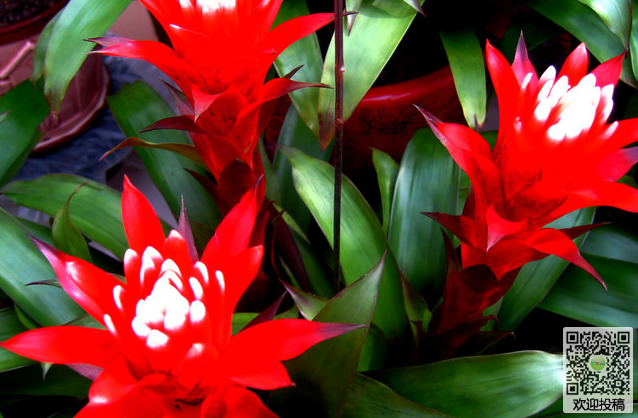Can you grow water in calla lily? It turns out that soil cultivation can be done in water.
Calla lily is a common decorative ornamental plant in daily life. Its flower shape is unique, light and elegant, and it is very popular. For many people who like flowers and flowers, calla lilies are also a good choice to experience planting. So can calla lilies be ploughed by water? Let calla lilies answer for you.
Many families who grow calla lilies adopt the method of soil culture, choosing sandy and acidic soil with good ventilation and drainage, matching with appropriate amount of garden soil and rotten leaves, adding a small amount of organic fertilizer, and putting it into calla lilies. . In order to avoid glare, medium temperature and semi-overcast environment, according to the soil dry watering, diluting fertilizer, actively controlling diseases and insect pests, patient cultivation, the later growth of fresh and elegant, noble and beautiful calla lilies.
What if you want to cultivate calla lilies by hydroponics?
Domestic hydroponic calla lilies usually have short and compact white plants, safflower calla lilies and silver calla lilies. For the purpose of large plants, tall green stems or yellow calla lilies can be used. The management of hydroponic calla is relatively simple, mainly to remove yellow leaves and some outer leaves. The purpose of peeling leaves is to avoid crowded leaves, which can affect lighting and ventilation, and pedicels protruding.
The configuration of hydroponic nutrient solution is a very important part of hydroponic calla. The following nutrient solution formulations can be used: 800g calcium nitrate, 210g potassium dihydrogen phosphate, 250g magnesium sulfate, 500g potassium nitrate, 30g ammonium nitrate. 10g EDTA ferric salt, 2g manganese sulfate, 1g zinc sulfate, 1.3g boric acid, 0.15g copper sulfate and 0.1g ammonium molybdate.
During the whole growing period of calla lilies, the supply of nutrient solution is mainly determined by weather conditions and plant size. Usually, the liquid is supplied 2 to 3 times a day to ensure the humidity of the culture medium, and the pH value of the nutrient solution is controlled between 5.6 and 6.5. Between.
Calla lilies grow and flowers need fresh air. Calla lilies are very sensitive to soot and toxic gases, so hydroponic calla lilies must stay away from the kitchen to avoid smoke pollution. In the growing season of calla lilies, you need plenty of sunshine, so you should let it bask in the sun as much as possible in winter.
Secondly, when hydroponically cultured calla lilies, we should pay attention to air circulation. If the ventilation is poor and the temperature is higher than the natural temperature, it will produce pests such as powder, aphids and leaf curlers. If pests and diseases are found, kill them with 1500-2000 times more omethoate.
The hydroponic culture of calla lily is basically anoxic culture, so zero pollution must be achieved. If the nutrient solution is contaminated by microorganisms, it will consume the dissolved oxygen in the water. Therefore, it is the key to maintain the clean state and inorganic properties of the nutrient solution and maintain the necessary level of dissolved oxygen in the nutrient solution.
Conclusion: calla is a kind of hydroponic plant. Its hydroponic process is relatively simple. The key is the configuration of hydroponic nutrient solution, variable control and pest protection in the process of hydroponic culture. As long as you always take care of your patience, you will eventually see calla lilies grow, full of fun, waiting for you to experience.
Time: 2019-05-11 Click:
- Prev

Do you understand why calla lilies don't blossom?
Elegant calla lilies are the choice of many flower lovers. But sometimes this happens, calla lilies bought home, after several years of planting, it did not blossom. Why don't calla lilies bloom? Let calla lilies speak for you. The reason why calla lilies do not blossom can be found in three aspects.
- Next

How to raise the first flower in order to be popular
Red clouds are also called pineapple blossoms. It is a kind of indoor ornamental flower in winter and spring. The four seasons are green, beautiful inflorescences, rich color, like the habit of high temperature, humidity and semi-shade. Can be placed in warm and bright guest rooms all year round. The following editor introduces you to the method of red hair flowers. I hope you all like it.
Related
- Fuxing push coffee new agricultural production and marketing class: lack of small-scale processing plants
- Jujube rice field leisure farm deep ploughing Yilan for five years to create a space for organic food and play
- Nongyu Farm-A trial of organic papaya for brave women with advanced technology
- Four points for attention in the prevention and control of diseases and insect pests of edible fungi
- How to add nutrient solution to Edible Fungi
- Is there any good way to control edible fungus mites?
- Open Inoculation Technology of Edible Fungi
- Is there any clever way to use fertilizer for edible fungus in winter?
- What agents are used to kill the pathogens of edible fungi in the mushroom shed?
- Rapid drying of Edible Fungi

